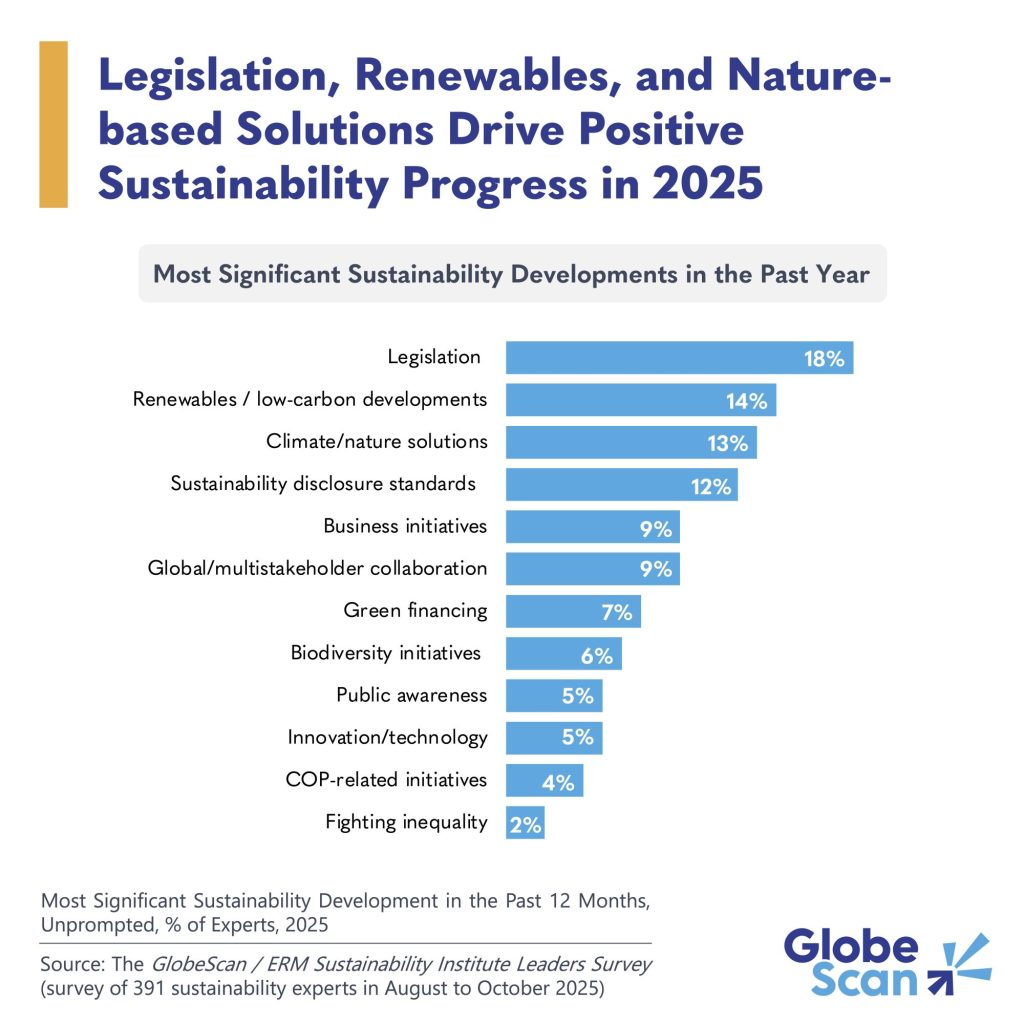What does it mean to be a corporate sustainability thought leader these days?
In the latest episode of our Two Steps Forward podcast, co-host Solitaire Townsend and I delve into that question, confronting a paradox that is central to corporate sustainability: At the very moment when business needs to step up and help shape the sustainability agenda, most companies have lost their nerve to talk about it.
Our conversation was spurred by a provocative new report from Kite Insights, “The Courage to Think Clearly,” which argues that sustainability thought leadership is no longer optional — it has become a strategic responsibility. In an era of climate disruption, institutional distrust and political polarization, silence isn’t neutral. It’s risky.
For Townsend, this isn’t a theoretical statement. She’s spent decades inspiring companies to adopt future-defining ideas through her firm, Futerra. And yet, she confesses, even now — especially now — it remains astonishingly difficult to convince companies to publish their insights, voice dissent or stake positions on emerging questions.
The down wave — and why it matters
Futerra’s recent research charts the ebb and flow of sustainability interest by the public over the past half century. The field, Townsend notes, has always moved in waves: peaks of intense optimism and investment followed by troughs of distraction, backlash and retrenchment. Right now, we’re clearly in a down wave — ESG skepticism, regulatory pushback and political weaponization of climate action are creating fierce headwinds across sectors.
But down waves are not dead zones, Townsend points out. They are incubators. The most durable sustainability ideas — the ones that later become mainstream — are often born during the quiet, uncertain intervals when fewer people are speaking out and conventional wisdom feels fragile.
“If you want to be part of creating what sustainability means for the next up wave, this is the moment to do it,” Soli argues. “Whoever does it will own the next wave.”
The courage gap
I’d agree with that premise but for a missing ingredient: courage. Despite unprecedented influence, business leaders remain strangely hesitant to speak plainly about such things as climate risk, sustainable consumption and climate policy. Most simply don’t want to call attention to themselves.
Which brings us back to Kite Insights’ report on thought leadership. For starters, how do you even define that term?
Soli and I point out one key distinction between thought leadership and overall corporate advocacy: Advocacy adds your brand voice to an existing cause, while thought leadership creates or advances a new way of understanding a problem or brings a new cause to the fore.
Thought leadership isn’t merely about educating the market. It’s the act of reframing how others see a challenge — and offering a clear path through it.
“Have you taken your idea and packaged it in a way someone else can take on board and use?” Soli asked. “If no one follows, are you really leading?”
If not, that’s a missed opportunity. In the sustainability arena, first movers don’t merely score reputational points — they can define standards, shape markets and influence policy.
Kite Insights’ report concludes that governments have lost the room, leaving business as the most credible actor capable of shaping society’s path forward. The question is no longer whether companies should speak up, but whether they’ll say something that’s worth hearing.
The Two Steps Forward podcast is available on Spotify, Apple Podcasts, YouTube and other platforms — and, of course, via Trellis. Episodes publish every other Tuesday.
The post The unsustainable world of sustainability thought leadership appeared first on Trellis.


